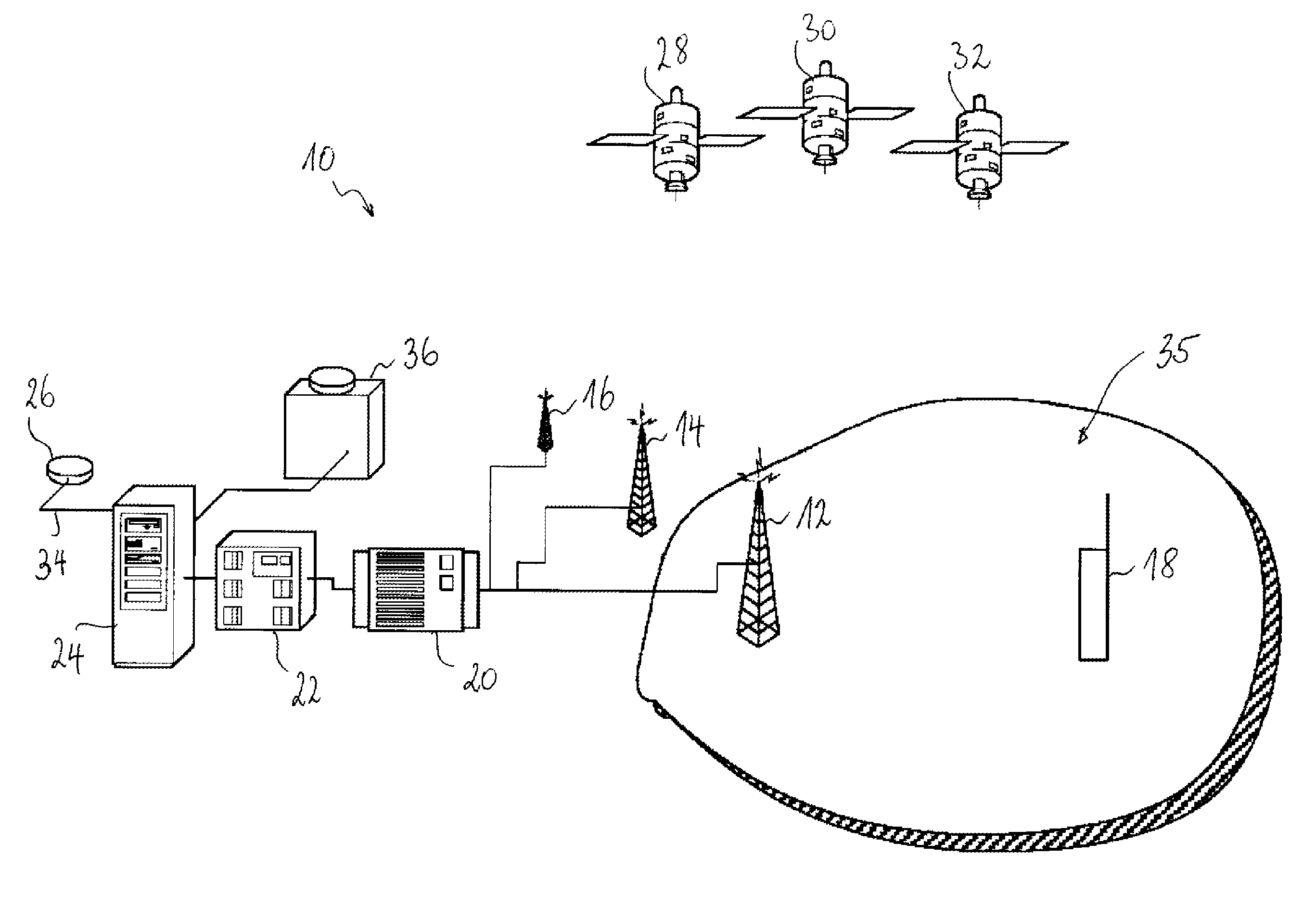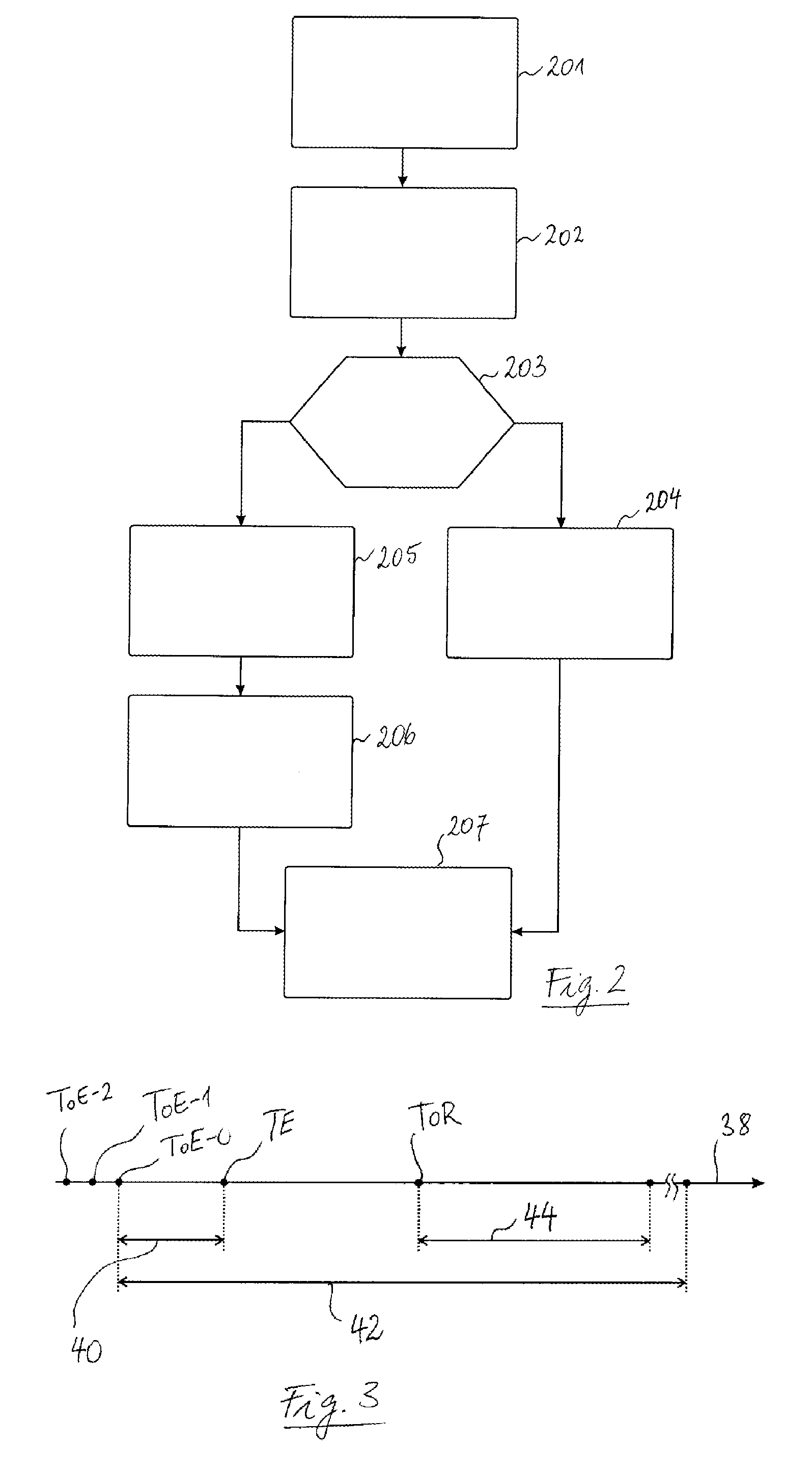Method for providing assistance data to mobile station of a satellite positioning system
a satellite positioning system and mobile station technology, applied in satellite radio beaconing, measurement devices, instruments, etc., can solve the problems of emergency call position fixing, low data rate of signalling layers, and insufficient accuracy of almanac data to allow a precise position fix that meets system specifications, so as to reduce the duration of position fixing, increase the accuracy of calculated positions, and save communication channel bandwidth
- Summary
- Abstract
- Description
- Claims
- Application Information
AI Technical Summary
Benefits of technology
Problems solved by technology
Method used
Image
Examples
Embodiment Construction
[0021]FIG. 1 shows the components of a communication system 10 using a satellite positioning system (such as e.g. GPS, GLONASS, Galileo or a combination thereof). The communication system 10 includes stationary infrastructure, such as the base transceiver stations 12, 14, 16 and a mobile station 18, e.g. the mobile phone shown in FIG. 1. The stationary infrastructure further includes a base station controller (BSC) 20, a serving mobile location centre (SLMC) 22 and an AGNSS server 24. The stationary infrastructure typically interfaces the mobile station 18 with land-based communication networks and / or the internet.
[0022]The AGNSS server is connected to a reference GNSS receiver 26, which receives ephemeris data broadcast by those GNSS satellites 28, 30, 32 that are visible from the location of the reference receiver 26. Communication between the reference receiver 26 and the AGNSS server 24 may be based on the internet protocol or any other suitable protocol. The server 24 receives ...
PUM
 Login to View More
Login to View More Abstract
Description
Claims
Application Information
 Login to View More
Login to View More - R&D
- Intellectual Property
- Life Sciences
- Materials
- Tech Scout
- Unparalleled Data Quality
- Higher Quality Content
- 60% Fewer Hallucinations
Browse by: Latest US Patents, China's latest patents, Technical Efficacy Thesaurus, Application Domain, Technology Topic, Popular Technical Reports.
© 2025 PatSnap. All rights reserved.Legal|Privacy policy|Modern Slavery Act Transparency Statement|Sitemap|About US| Contact US: help@patsnap.com



